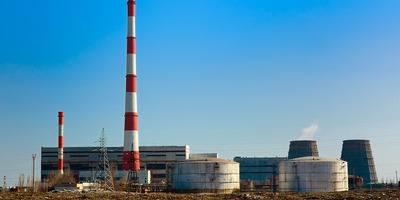Things to know before choosing green energy stocks
Things to know before choosing green energy stocks
Consumers are becoming more aware of the value of switching from traditional energy sources to renewable energy sources as we become more aware of our effect on the environment. There are strong growth opportunities for green energy service companies that have scaled their businesses in this sector as the market of green energy stocks continues to rise. Our review page will help you find the best green energy stocks that have the potential to produce substantial returns over the next decade. You can also get reviews from other energy service companies on our page. Continue reading to know more about green energy stocks.
What is green energy
Green energy refers to any type of energy that is created using natural resources such as sunlight, wind, or water. It is often extracted from renewable energy sources, but there are some distinctions between renewable and green energy that we will discuss further down.
What's the Difference Between Green and Renewable Energy?
Green energy, according to the Environmental Protection Agency(EPA), offers the greatest environmental value and includes solar, wind, geothermal, biogas, low-impact hydroelectric, and some qualifying biomass sources. Renewable energy involves the same sources as green energy, but it also encompasses technologies and products that have a major effect on the local and global climate.
Why is Green energy Important?
The most critical feature of these energy supplies is that they do not damage the environment by emitting greenhouse gases into the atmosphere.
Finding the right green energy stocks in 2021
There are numerous green energy stocks in 2021 that you can invest in, but to find the right one, you need to make use of reviews. We recommend that you visit our review pages to see other people's experiences with these companies.
Why should I invest in green energy companies?
Many people invest in green energy for personal or ethical purposes, but helping the environment isn't the only advantage of having green energy in your portfolio. Green energy investments will help you diversify your portfolio. Green energy investments can act as a stabilizing force when oil and other traditional energy resources become volatile. Green energy is now becoming more affordable, which makes it more attractive to consumers and investors. Solar energy has become more affordable. Wind energy is also one of the cheapest and fastest-growing energy sources on the planet.
Can It Be Economically Viable?
A contrast of green energy to fossil fuels is essential to understand its economic viability. The truth is that as easily available fossil resources become scarce, the cost of this form of energy can only grow. Greener energy sources are becoming more affordable at the same time as fossil fuels are becoming more costly.
Can It Replace Fuels?
Green energy has the potential to substitute fossil fuels in the future, but it may require a variety of production methods to do so.
Is It A Good Time to Invest in Green energy stocks?
For both experienced and new investors, this is undoubtedly a once-in-a-lifetime chance. Compared to the sky-high price tags on some tech stocks, the sector's valuations are mostly modest. Furthermore, I believe that the industry will continue to expand as a result of investments in the form of global green initiatives.
Investors are also searching for the best green energy stocks to add to their investments. For example, there are more major players in the solar energy industry in recent times. Solar power generation could account for 20% of the global electricity supply by 2050, according to recent statistics.
How to Invest in Green Energy
There are several green energy investment opportunities available for investors with varying risk appetites.
Direct Investment in Renewable Energy Projects
Let's start with the low-risk alternatives. Individuals and businesses can now participate directly in renewable energy ventures, typically in small amounts. These are low-risk investments; once the device is installed and operational, solar PV projects are unlikely to fail. Community solar projects are becoming increasingly common because they support the local economy by generating employment in fields like planning, building, and maintenance.
Invest in Exchange Traded Funds (ETFs).
This is a slightly riskier strategy, but it has the potential to yield higher returns. Although companies have always invested in the stocks of other related businesses, the implementation of ETFs has made this strategy less risky. ETFs function similarly to individual stocks, but they are made up of thousands of different stocks. They are structured to replicate the performance of major markets, but at a lower cost of ownership than funds.
Types of green energy?
There are several different types of green energy that come from various sources. Some of these are best suited to certain ecosystems or areas.
Solar Power
Solar energy is a clean, renewable source of energy that is derived directly from the sun. Nuclear fusion, the mechanism by which smaller atoms are fused by heat and pressure to create larger atoms, creates an unimaginable amount of energy in stars, with a lot of energy released in the process. Solar radiation brings this energy to us, which we can collect and turn into usable electricity.
Solar panels are the most common method of harvesting solar energy. These are photovoltaic cells, which are arranged in panels. The photoelectric effect occurs as sunlight strikes these cells, causing an electrical current to flow. The current is then converted to alternating current by passing it through an inverter. It can then be used to power your home or integrated into the national grid.
Wind Power
Wind energy is another type of energy that is generated by the sun. Since winds are caused by the uneven heating of the atmosphere. The topology of our world, its spin, and our orbit around the sun all contribute to this unevenness.
Winds are further affected by the surface they travel through, which can be either ground or water. Wind power is most commonly associated with three-bladed wind turbines. These, unlike solar energy, operate on a very simple principle. The blades of the turbine are turned by the wind, which turns an internal rotor. The main shaft is then driven by the rotor, which spins a generator and produces electricity. While wind appears to be strong, large wind farms are needed to produce enough electricity to make a difference.
Hydroelectric
The energy found in flowing water is captured and used to generate hydroelectric energy. This is best done by forcing water to flow along a narrow path, which increases the amount of energy per square meter. This is usually accomplished by storing water in a reservoir or dam and purging the water selectively by opening an intake. The gravitational potential energy stored by holding water higher up in the dam accelerates the flow through the intake. When the flow is emitted, it spins a turbine, which then stimulates a generator, which generates electricity.
Hydroelectricity is one of the most common types of green energy due to its performance. Using hydropower to produce electricity avoided the release of 4 billion tonnes of greenhouse gases into the atmosphere in 2017.
Biogas
The beauty of biogas, if such a thing exists, is that it is both a renewable energy source and one that uses our waste materials. Biogas is a by-product of the decomposition of organic matter and can be found in sewage, food, farm waste, and manure. These products are contained in oxygen-depleted tanks, allowing them to ferment and emit methane, carbon dioxide, and other gases. The emitted methane can then be sold and used to heat homes, generate electricity, and power automobiles. At the same time, waste that is digested in a biogas digester becomes nutrient-rich fertilizer that can be used on farms or even at home.
Biomass
Biomass, like biogas, is a renewable energy source originating from plants and animals, they store energy from the sun in the form of sugar or cellulose. Much of biomass is converted into biogas and liquid biofuels such as ethanol and biodiesel when it comes to turning biomass into usable energy. Other solid materials, such as wood may be burned to heat buildings and generate energy on their own.
Conclusion
Green energy seems to be a part of the world's future, providing a cleaner alternative to many of the world's current energy sources. These readily replenished energy sources are not only beneficial for the atmosphere, but also job growth, and they continue to be economically viable as time goes on. The truth is that fossil fuels must be phased out of our energy mix because they do not have a long-term solution. We can create a fully sustainable future for our energy supplies by creating a range of green energy technologies that do not affect the environment we all live in. To find the best green energy companies, feel free to visit our page about green energy service company reviews.
By
Mo
More Energy

Steps Every Small Business Should Take To Save Money on Energy Bills
Saving money on your energy bills is important for any business, no matter how big or small. This blog post will discuss some tips that every small business can take to help reduce their expenses. Implementing even a few of these suggestions can result in significant savings over time.

All you need to know about energy service companies
Energy Service Companies are becoming more popular, but many people are still unaware of what they offer. Make no assumption: Read everything you need

Understanding and Finding best electric companies
This article contains the information you need before choosing an electric company, read the article about the best electric companies to know more

All you need to know about Oil and Gas Companies
Gas Companies are still very much relevant in our world today. In this article, you find all you need to know about these companies and how to choose